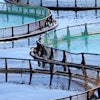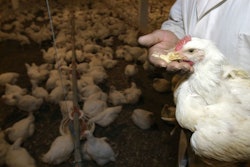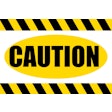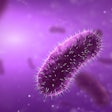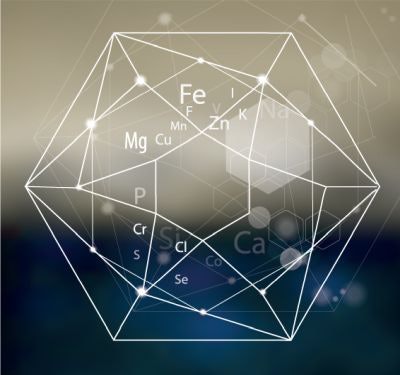
Trace minerals play many roles in animal nutrition and have far-reaching consequences for body processes.
Editor’s note: This is the first in a two-part series examining the important of microingredients in dairy rations.
There is much research on minerals in ruminant nutrition, particularly their association with metabolism and production, e.g. calcium (Ca). While the macrominerals, like Ca, magnesium (Mg) and potassium (K) have received much focus, the microminerals, or trace minerals, have also seen their own share of the attention, particularly copper (Cu), selenium (Se) and zinc (Zn).
There is much discussion about, and research on, the level and form of trace mineral supply in ruminant diets. With this in mind, this article will focus on the roles of certain trace minerals in the animal body.
The roles of trace minerals in nutrition are numerous and have far-reaching consequences for many body processes. One of the major areas that nearly all trace minerals are involved in is enzyme function and most of them are either an integral part of an enzyme or are required for it to function.
Certain trace minerals are involved in protein synthesis, for example, Zn, which is required during the process involving the reading of DNA to make proteins. Carbohydrate and lipid metabolism are also affected by the presence or absence of trace minerals, mainly because they form part of many proteins. Minerals, such as Se, are known to have a direct effect on the immune system and many others, like Cu, are involved in processes that have an indirect effect.
Here is an overview of the key trace minerals and their part in dairy cattle health and production.
Critical role of copper
Copper has some quite diverse and critical roles in biological processes. Copper is one of the more researched trace minerals and plays an important role in the transportation of iron (Fe) around the body, as well as being implicated in survival of the young embryo. It is also involved in blood clotting via two clotting factors that are Cu-containing proteins.
Copper plays a role as an antioxidant, especially in neutrophils following respiratory burst, the process that occurs after ingestion of a pathogen. This process produces dangerous reactive oxygen species (ROS), often termed free radicals, that destroy engulfed pathogens but also serve as a risk to the neutrophils themselves. The presence of antioxidants, such as Cu, reduce the risk of cell death caused by these ROS. This cell death has an impact on the competency of the immune system, and Cu-inadequate animals often show increased susceptibility to infection.
One of the most crucial activities of Cu is its role in the energy-generating enzyme cytochrome c oxidase. This is the last in a chain of enzymes that results in the production of adenosine triphosphate (ATP), the energy currency for all living tissues. Connective tissue development is also Cu-dependent and deficiency can result in bone disorders and problems with central nervous system (CNS) development in the fetus, resulting in complications in the neonate, such as swayback.
In terms of toxicity, adult cattle are less at risk to chronic Cu poisoning than young stock and there is often co-occurrence with issues like fluke. Absorption of Cu in ruminants is mostly affected by its interaction with molybdenum (Mo) and sulfur (S). Both these elements will combine with Cu to form thiomolybdates, rendering the Cu unavailable to the animal. The threshold above which dietary total dietary Mo becomes a problem is around 2mg/kg intake.
Strategies to overcome unavailable Cu as a result of these thiomolybdates have included the use of sacrificial Cu, additional sources and amounts of dietary Cu to try to offset the amount bound in the rumen. Feeding Cu in forms that are not free to interact with Mo and S, for example some types of organic Cu minerals, is often regarded as a safer way to overcome this issue.
Iron vital for living cells
Iron (Fe) is generally not added to mineral feeds for adult cattle, certainly in Europe, and is often thought of from a toxic perspective. Despite being an antagonist to other minerals, like Cu and Mn, it’s vital for life.
The most well-known function is that of a structural one in hemoglobin and myoglobin, allowing tissues to be fed with oxygen from the lungs. However, another critical role is in producing energy for living cells in the form of ATP. It is vital for pretty much every stage of the Krebs (TCA) cycle, as well as being involved in the cascade of reactions in the electron transport chain that ultimately generates the energy for cells.
In terms of deficiency, anemia and reduced immune function are the major clinical signs. Iron acts as a pro-oxidant, so higher-than-tolerable levels lead to damage to cell membranes affecting their function.
Iron also competes for absorption with Cu and Mn, so excess iron can induce deficiency symptoms for these minerals. Various other factors affect Fe absorption, such as age of the animal, conditions within the gastrointestinal tract, vitamin C and the form of Fe.
Iodine aids in metabolism
Iodine (I) is famous for being part of the thyroid hormones, T3 and T4, which have an impact on whole body metabolism, including thermoregulation, growth and muscle function. Generally, deficiency results in enlargement of the thyroid gland (goiter) together with impaired metabolism, while toxicity results in an overactive metabolism and respiratory symptoms resembling a respiratory tract infection.
Iodine is absorbed very well from the gastrointestinal tract and ~90% will be absorbed directly from the rumen. It can be recycled in ruminants. Generally, excess I is expelled via urine, but substantial levels maybe excreted in milk.
Excessive levels of I in milk going into infant formulas in certain parts of the world has raised concerns over the potential negative impact on the developing neonate. Its role in thermoregulation sees I uptake and retention markedly increase in colder temperatures. This may be of particular importance in young animals.
Certain compounds, termed goitrogens, have the ability to induce I deficiency through inhibition of enzymes related to I metabolism. They exist in some feedstuffs used in ruminant diets. Examples include brassica species like kale and rutabaga, white clover and certain cultivars of rapeseed.
Manganese for tissue development
Manganese is often overlooked when we think about trace minerals. As with its mineral counterparts, it plays a role in enzyme systems and is also involved in energy metabolism. Via this, it is required for normal lipid and carbohydrate metabolism, illustrated by fat accumulation seen when Mn is limiting.
Similar to Cu and Se, Mn forms part of the antioxidant defense as part of one of the enzymes, superoxide dismutase (SOD). Connective tissue development can be compromised in Mn-deprived animals, as well as a reduction in the production of prothrombin, a clotting factor. Absorption tends to be regulated and affected by interaction with other minerals, particularly Fe. There is also an effect of age of the animal. The majority is excreted via the feces.
Zinc required for protein synthesis
Zinc has numerous functions that go beyond metalloenzymes. It is required for the synthesis of proteins via involvement the structural and functional integrity of transcription factors in DNA metabolism. Thus, lack of Zn can have significant impacts on gene expression, particularly in the fetus.
Yet again, this mineral is involved in the animal’s antioxidant defense system as part of one of the antioxidant SOD enzymes. It’s also been suggested that it may act with vitamin E to protect cell membranes against Fe oxidation.
There appears to be quite a high tolerance to Zn, but where toxicity has occurred the main effects appear to have been a reduced feed conversion efficiency together with depraved appetite or pica. Absorption of zinc along the small intestine is regulated and its efficiency increases or decreases in line with dietary availability and animal need. Similar to Mn, most Zn excretion occurs via the feces.
Importance of selenium
Selenium is one of the most well-known trace minerals and is famous for its role in the structure and function of more than 25 selenoproteins. It is also the principal element in the antioxidant defense system and forms part of the suite of antioxidant enzymes known as the glutathione peroxidases. These enzymes work primarily inside the cell by terminating chain reactions of oxidation and preventing buildup of ROS generated during metabolic processes. They work in tandem with cell membrane-bound vitamin E, which also scavenges ROS.
Glutathione peroxidases share their job with the SOD suite of Cu, Mn and Zn-containing antioxidant enzymes. Studies have shown variable responses to dietary Se over the years and the interaction between these enzymes, as well as vitamin E account for the some of the variation.
Selenium is also involved with metabolism of arachidonic acid (C20:4 n-6) to interleukin 2 (IL-2). Interleukin 2 is a cytokine (chemical messenger) related to T-cell differentiation and proliferation during activation of the immune system. Selenium levels are directly related to IL-2 and this is one explanation of the inability to mount a good response to a pathogen or vaccine in Se-deprived/inadequate animals.
Together with I, Se plays a role in thyroid metabolism. The primary enzyme involved in converting thyroxine into the active form of the hormone contains Se. This active hormone has many roles in metabolism, including thermogenic capacity, and there is a link between Se deprivation and a reduced ability to deal with cold stress.
There is a range of disorders and issues that accompany Se deficiency. Despite the numerous roles of Se it is the most toxic of all the trace minerals. While acute toxicity can occur, it’s usually a chronic selenosis that’s seen and animals look dull and lethargic, with sloughing of the hooves and in certain cases collapse and death. What Se deficiency means for the cow from a more practical perspective is a much greater susceptibility to disease, which can lead to mastitis, metritis, lameness, impaired fertility and reduced production.
Absorption and retention of dietary Se varies substantially by form. There are marked differences between inorganic and different organic sources, mainly due to their metabolism in the digestive tract but also post-absorption. Unlike some of the other minerals, there are three routes for excretion: exhalation, urinary and fecal.
Trace minerals key to animal health
The physiological roles of trace minerals are numerous and diverse with some commonalities. Much of their contribution is via enzyme systems, particularly the antioxidant system. Because of the significant influence trace minerals have over metabolic processes, it’s not surprising that they affect all aspects of production, health and fertility.
References available upon request.

